About Heroin Addiction
Learn More About Heroin Addiction
Heroin is a dangerous, illegal, and highly addictive opioid. A derivative of the opium poppy plant, heroin is closely related to morphine, yet the effects of heroin occur much more quickly and are significantly more intense than are the effects of morphine. Heroin, which is also sometimes referred to as smack, horse, H, or tar, is most commonly abused by being injected, though it can also be smoked or snorted. Heroin use results in an intense sense of euphoria, followed by an extended period of extreme drowsiness.
As is the case with most opioids, heroin also has strong analgesic, or painkilling, properties. For this reason, some nations permit doctors to use heroin to treat patients who are experiencing severe pain. However, in the United States, possessing or using heroin is illegal in all circumstances. Among the reasons for the drug’s ban in the United States and many other countries is that heroin has high potential for tolerance, abuse, and addiction.
Heroin dependence can begin to develop after a single use of the drug. Once a person becomes addicted to heroin, powerful withdrawal symptoms can make it virtually impossible to stop using this drug without professional intervention. With the comprehensive care that is available at an effective residential treatment center, however, individuals dependent on heroin can overcome their heroin dependence and learn how to make the changes that will allow them to live healthier, drug-free lives.
Statistics
Heroin Addiction Statistics
Experts with the World Health Organization (WHO) estimate that more than nine million people abuse heroin across the globe every year, and that about 70,000 annual deaths can be attributed to the abuse of heroin and other opioids.
In the United States, heroin abuse has been on the rise. In 2002, researchers with the National Survey on Drug Use and Health (NS-DUH) reported that 404,000 Americans had used heroin at least once in the past year leading up to the survey, and that 166,000 had abused the drug in the past month. By 2012, past-year abuse of heroin had risen to 669,000 and past-month use had increased to 335,000.
About 0.2 percent of adolescents and teenagers ages 12 to 17 told researchers that they had abused heroin, a number that has remained relatively steady in recent years. Unfortunately, the age of heroin abusers is trending downward. For example, in 2009, the average age of first use of heroin was 25; one year later, it had dropped to 21.3.
Causes & Risks
Causes and Risk Factors for Heroin Addiction
Heroin abuse and addiction can be precipitated by several factors, including both genetic influences and environmental causes. In most cases, a combination of factors can be identified as leading to the abuse or addiction. The following are among the several influences that may lead a person to abuse and become dependent upon heroin:
Genetic: Several studies indicate that genetics may play a significant role in determining whether or not a person is at risk for developing dependence upon heroin or another substance. If a person has a close relative, such as a parent or sibling, who has battled an addiction to heroin or another drug, that person is at increased risk for experiencing a similar problem. One study suggests that people whose parents were addicted to heroin are 80 percent more likely to become addicted to this drug themselves than are people whose parents never struggled with chemical dependency.
Environmental: Having parents, siblings, or other relatives who engage in heroin abuse can also be an environmental influence. People who grew up in households where heroin abuse occurred are more likely to engage in this behavior than are individuals who were raised in drug-free homes. Other environmental factors that can influence a person to abuse heroin include being abused or assaulted, living in an impoverished neighborhood, regularly abusing alcohol or other drugs, and being exposed to heroin by friends or colleagues.
Risk Factors:
- Gender (men are more likely to abuse heroin than women are)
- Family history of drug abuse or mental illness
- Poverty
- Trauma
- Chronic abuse of alcohol or other drugs
- Personal experience with mental illness
- Low self-esteem or self-worth
- Poor coping skills
- Exposure to significant stress
Signs & Symptoms
Signs and Symptoms of Heroin Addiction
Heroin abuse and addiction may reveal themselves via a range of signs and symptoms. While the appearance of heroin abuse may take many forms, the following are among the more common signs that may indicate the presence of a problem with heroin:
Behavioral symptoms:
- Always wearing long sleeves and long pants (to hide evidence of IV heroin use)
- Lying about activities or whereabouts
- Withdrawing from family and friends
- Failing to meet responsibilities at home, in school, or at work
- Experiencing unexplained financial problems
- Stealing money or items that can be sold to purchase heroin
- Possessing hypodermic needles and other heroin-related paraphernalia
Physical symptoms:
- Extreme drowsiness
- Constricted pupils
- Runny nose
- Watery and/or bloodshot eyes
- Nausea and vomiting
- Slurring speech
- Drastic weight loss
- Dry mouth
- Flushed skin
- Scabs, sores, or bruises that do not heal
Cognitive symptoms:
- Paranoia
- Inability to concentrate or focus
- Inability to think and/or express oneself clearly
- Disorientation
- Poor judgment and problem-solving capabilities
Psychosocial symptoms:
- Anxiety and/or restlessness
- Irritability
- Excitability
- Feelings of euphoria
- Loss of interest in activities or issues that were previously important
- Dramatic mood swings
Effects
Effects of Heroin Addiction
The effects of heroin abuse and addiction can be devastating. Abusing and becoming dependent upon heroin can rob a person of his or her physical wellbeing, emotional stability and financial status, while also damaging or ruining his or her academic progress, work performance, and interpersonal relationships.
The following are just a few of the many negative effects of heroin abuse:
- Financial ruin
- Legal problems, including incarceration
- Domestic violence and other signs of family dysfunction
- Separation and divorce
- Loss of employment
- Homelessness
- Academic failure
- Heart attack
- Stroke
- Kidney failure
- Lung damage
- Liver disease
- HIV/AIDS
- Respiratory distress
- Death
Co-Occurring Disorders
Heroin Addiction & Co-Occurring Disorders
Many people who become addicted to heroin are also struggling with a co-occurring mental health disorder. The following are among the more common conditions that are known to afflict individuals who have abused and become dependent upon heroin:
- Anxiety disorders
- Other substance use disorders
- Posttraumatic stress disorder (PTSD)
- Attention-deficit/hyperactivity disorder (ADHD)
- Chronic pain
- Depressive disorders
- Bipolar disorder
- Schizophrenia
Withdrawal
Effects of Heroin Withdrawal & Overdose
Effects of heroin withdrawal: When a person’s body has become dependent upon heroin, stopping or significantly reducing one’s heroin intake will prompt a number of unpleasant symptoms. The intensity of heroin withdrawal is one of the reasons why it can be so difficult to stop using this drug without professional help. Common heroin withdrawal symptoms include the following:
- Intense cravings for heroin
- Abdominal cramping
- Muscle pain
- Tremors and spasms
- Profuse perspiration
- Nausea
- Vomiting and diarrhea
- Dangerously high or low body temperature
- Agitation and irritability
Effects of heroin overdose: Individuals who abuse heroin are always at risk for overdosing. When a person ingests heroin in an amount or of a potency that exceeds the body’s ability to process the drug, the result can be catastrophic. A person who exhibits the following symptoms of heroin overdose may be in need of immediate medical attention:
- Respiratory distress
- Hypotension (dangerously low blood pressure)
- Weakened heartbeat and pulse
- Delirium
- Seizure
- Loss of consciousness
- Coma
















